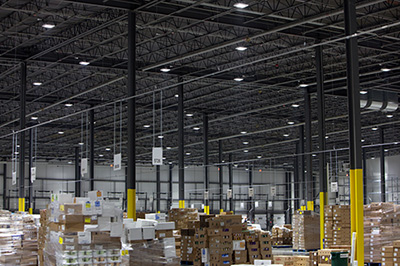The cat and mouse game between the steps taken to protect product and raw material as it travels through the supply chain continues in parallel with the actions taken by those who wish to compromise these measures. Supply chain security is an important issue that will be discussed in this post.
The various risks inherent in the logistics process – and in any other business activity – can never be eliminated, only identified using risk management tools used to reduce vulnerabilities to manageable or acceptable levels. Unfortunately, the nature of criminal strategies may often become apparent after the act. The time taken to focus on, determine and plug deficiencies – and the cost involved in doing so – extends the period of vulnerability, since there can be no “grace period” in ongoing and difficult operations.
Technology Solutions for Supply Chain Security

Various technologies are now being deployed to support the safe handling of goods and encourage supply chain security. The use of protective technology has been a boon in the effort to bolster supply chain visibility, integrity and the reporting of anomalies. But an expectation that the deployment of these technologies might in themselves significantly stem losses has not been met. Of course, this is partly due to the increase in supply chain growth, its complexity and pace, all of which in themselves have generated new efficiencies and concurrent vulnerabilities.
Modern technologies to enable and safeguard the stringent demands of modern supply chain logistics, such as electronic monitoring of product movement, warehouse automation, robots and more has heralded ever greater efficiencies, without which current and future demands cannot be met.
These technologies also held promise that losses could at last be contained. RFID tags, holograms, high-technology packaging, smartphone detection of counterfeit barcodes, are all becoming widely deployed to notify deviations from a known process, provide alerts and to initiate a response. So in the never-ending battle for secure solutions, new technologies can help. But they are in no way the cure-all for the actions of adversaries. Supply chain security is a comprehensive battle.
For sure, protective technology has been deployed with positive outcomes. But in some areas, the known failures and their consequences speak for themselves.
Vulnerabilities in Supply Chain Management
The risks of vulnerabilities in moving valuable and theft-prone product are well known. Incremental advances using technology or process improvement continue to be positive steps, but may not be in sync with the ever-changing actions of adversaries determined to undermine or subvert any momentary security advantage. The rewards are just too great.
In fact, some would say that supply channels are losing the battle to stem losses, particularly in the areas of product diversion, substitution and counterfeit. In a worst-case scenario, end users could be left to discover anomalies – sometimes with fatal results. If so, the protections afforded to product movement have been shifted to end users who unknowingly become the final validators of product integrity – not a reassuring situation.
Knowing the risk, imagining what’s next and determining likely outcomes may offer foresight to anticipate and sidestep upcoming security challenges. But since the stakes are so high, it may be time to revisit the proven fundamentals used previously to contain losses “to put off the day when something bad happens” or to “transfer the risk elsewhere.” These practical measures emphasize prevention and the need for effective supply chain security throughout all the “sectors” of supply chain – manufacturing, storage, distribution and transportation. Each has its own specific preventive subtopics of course, but a focus on any one in isolation may cloud a gainful understanding of the overall process, its vulnerabilities and weaknesses.
(This blog is one of several that will relate to safeguarding the movement of raw material and finished goods from one place to another.)